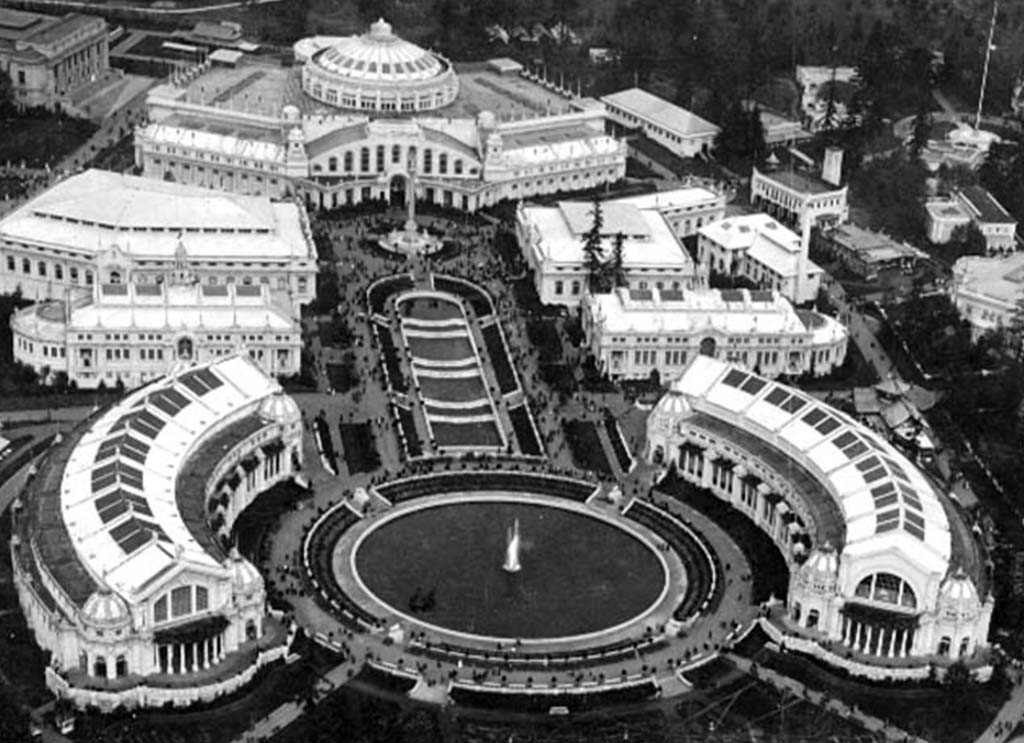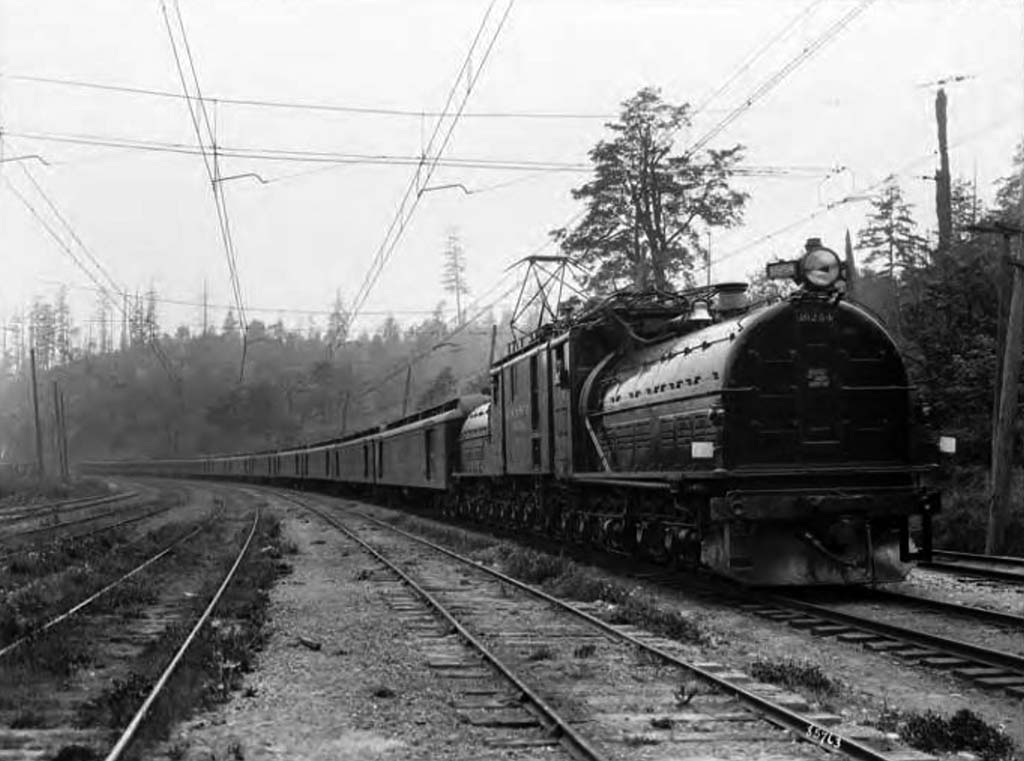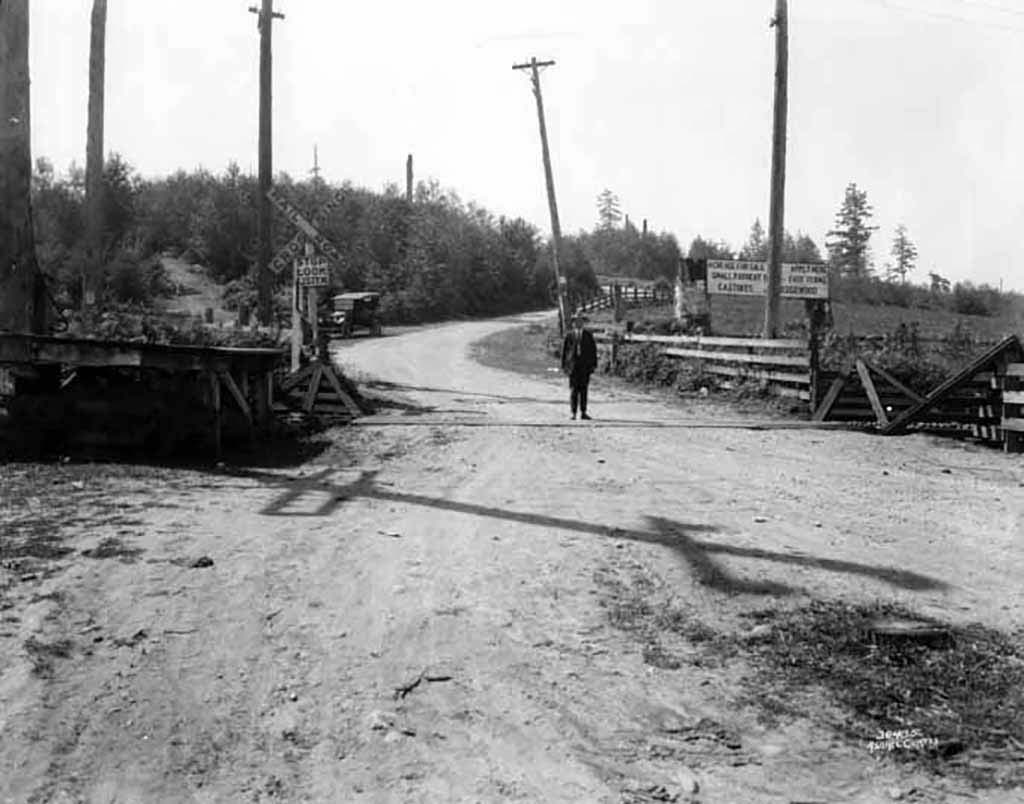-----
 |
| The Alaskan Yukon Exposition Grounds, 1909 (Historylink.org) |
On June 1, 1909, President William Howard Taft officially opened the Alaskan Yukon Exposition in Seattle while not being there at all. Thanks to the wonders of electricty and its rapid expansion through power stations and in communities across the United States, a mere push of a button across the whole country could make the city of Seattle light up like Van Gogh's Starry Night. Even the Puget Sound Electric Railway (PSE) was getting into the swing of things, experiencing the highest ridership since its opening ferrying people to and from the fairgrounds.
 |
| Jacob Furth, 1900 (Alfred D. Bowen) |
Jacob Furth, president of the Puget Sound Traction, Light and Power Company (a holding conglomerate that handled all electricty operations in the area), decided that, despited the exposition patronage, the PSE was not bringing in enough money. To remedy this, he proposed a new fare rate of 2 cents per mile, equivalent to main line railroads. (Wing, 38) In 2020 dollars, this would be 56 cents (and we all know how pricy some transit passes are already), so people naturally took arms against this in a time when you would generally earn a dollar per day.
Not only were citizens involved in the squabble, but land developers took their side as well due to thinking the interurban company was stiffing them on land value. One developer from Kent, C.W. Horr, recommended the small town annex itself to take control of the interurban fares, while C.D Hillman, another developer, promised to "spend his last dollar, if necessary" to bring PSE in line. (Wing, 38) The Milwaukee Road and Northern Pacific were also contacted as freight aid, hoping their main line operations could foot the cost of PSE operations rather than dump it on the passengers.
The State Railway Commission (SRC) finally stepped in on March 1910 to force the PSE to return the rates back down, finding them "unjust, unreasonable, and expensive." (Wing, 38) The owners of PSE, Stone and Webster, determined "street railways were declining" as a means to justify their rate increases. By the next year, PSE's 1910 gross earnings were about 20% or so above their earnings in 1909, spread over 208 employees with $192,120 paid in wages. It seemed the rate increases worked.
Unable to let things go, lawyers representing the PSE took the SRC to court in 1913 to protest the rate lowering, arguing their return on investment "should be more like 7%" rather than the "1%" they were already recieving. (Wing, 39) The public didn't buy it, especially when fares in some areas jumped from 15 to 40 cents, one-way. Many people who moved out of Seattle into smaller towns like Tukwila were now moving back up and taking business with them.
 |
| A political cartoon from the Electric Railway Journal, showing the frustrations of interurban vs jitney passengers, 1908 (Smithsonian Libraries) |
Despite the protests, the sit-ins, the political cartoons and the faked losses from supposed new bus traffic, the PSE continued on into the 1910s as best they could. The Exposition may have provided them increased patronage enough to gauge if they could made a profiet on it (Which they did, $1.5 million by 1913), but this would also be the highest point for PSE. It would, unfortunately, all go downhill from here.
 |
| A Milwaukee Road Bi-Polar leads a passenger train into Tacoma, 1921 (Historylink.org) |
Not only were railroads trying to encroach on the bad PR of the PSE, but starting in 1913, bus lines in Tukwila and Duwamish were springing up and taking business by storm. The new state highway between Auburn and Tacoma also meant a smoother, faster, and more direct drive the interurbans simply could not contend with. PSE fought back with a $60,000 block signal system investment and new track, as well as new routes to Puyallup and Renton, but to no avail: the buses were just that good. At the risk of going under, the company sold itself to the city of Seattle in 1918 for $15 million, unable to compete privately.
 |
| A PSE railroad crossing in Edgewood, 1920 (Historylink.org) |
The biggest hits to the PSE came, literally, through some rather grisley collisions. On December 26, 1906, Train 3 to Tacoma hit a gravel train in Edgewood, giving the company the dubious achievement of first fatalities. Motorman Guyer, Conductor Ross, and one passenger died when Train 3 took the siding to let a northbound Train 6 past. (Wing, 89-90) A brakeman onboard Train 6 failed to alert Train 3 of a gravel train following close behind, so when Train 3 took to the main again, it barreled into the gravel train at 25 mph. The Gravel train was travelling the same speed, so both trains hit each other at a combined 50MPH. Heavy gravel cars tore into the lead car so much that it got ripped off its trucks, and twenty one people ended up injured. The cut through Edgewood was eventually called "Deadman's Cut," which is now a housing development.
| Two PSE cars crunched together in 1925, the broken windows suggest passengers may have broken them to escape (University of Washington Library) |
Six years later, in July 1912, a southbound train at track speed (35MPH) struck the stalled car of Dr. E.M. Rinninger of Riverton. As he stood up to check on his chauffer, or for whatever reason, he was thrown out of his vehicle as the train hit and was dragged 60 feet underneath. The train continued on for 300 feet more, becoming just one of many crossing strikes that hurt PSE's reputation. The company tried to save face, running promotional ads that "extolled" management and their safety record, but the people weren't buying it. By 1921, two years after Seattle's acquisition, more than 20 people were killed or injured by crossing strikes, including a horse drawn milk wagon in October 1918.
If anything, one of the most peaceful "accidents" to happen to the PSE was the record snowfall of Feburary 1916, where the Seattle Star urged the public to "Grab a shovel, folks! Let's give Seattle Electric a hand!" (Wing, 97) The other happened in the early 1920s, when a boy bound from his aunt in Seattle to his parents in Auburn decided to ride the cowcatcher from Seattle to Renton Junction. (Wing, 98) Sounds silly, but that's goals right there.
 |
| Kids ride aboard the folded peoplecatcher of a MUNI J Church streetcar, for illustrative purposes (San Francisco Chronicle) |
By the start of the 20s, the PSE was limping along as best it could. Bus traffic was severely cutting into their profits and the City of Seattle could not keep running in the red (all passenger-carrying railroads always run in the red) any longer. The original owners, Stone & Webster, decided to merge most of their transit acquisitions into a new holding: North Coast Lines (NCL) and the Interurban did not factor into it. But I'm getting ahead of myself, come back on Thursday and I'll tell the whole story.
-----
And that was Trolley Tuesday's little rundown of the pitfalls of the Puget Sound Electric. Though railroad museums give us a very pleasant, happy view of electric railroading, things were not that happy underneath. Money losses, public backlash, and grisly accidents are always something every railroad faces and, though the cars may be iconic and the services nostalgic, they were a business first and foremost. Puget Sound might as well been the most unlucky interurban company in the Northwest, but who knows for sure? Either way, thank you for reading and have a good Tuesday.

No comments:
Post a Comment